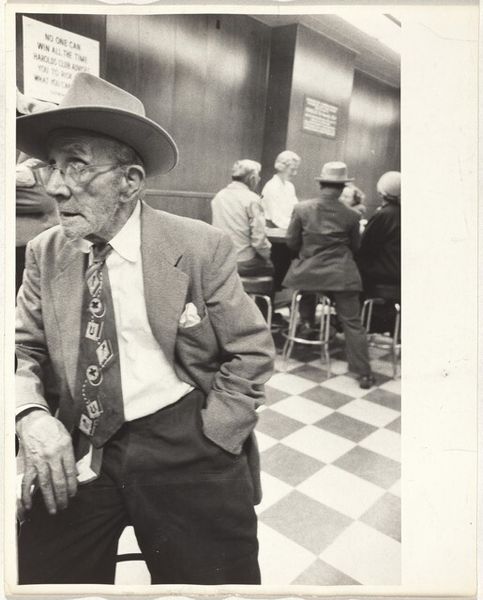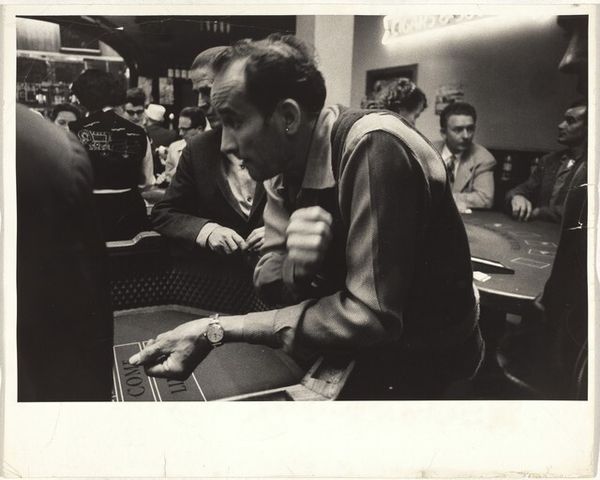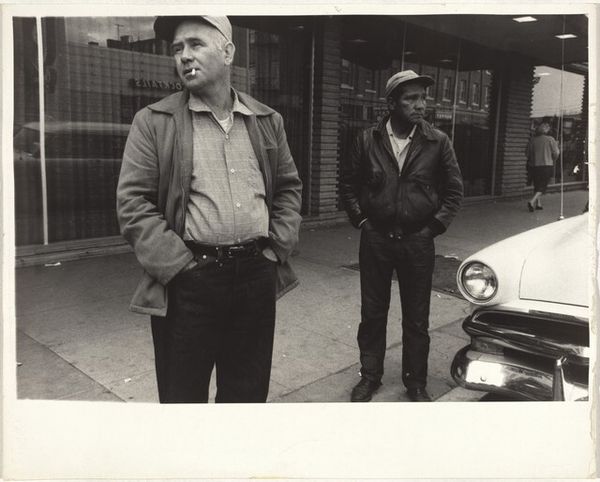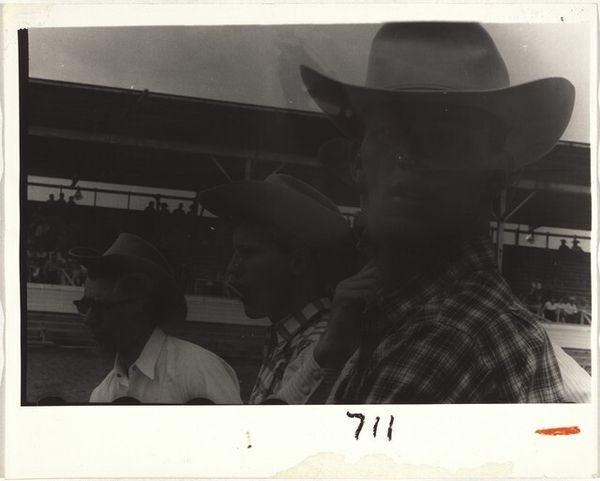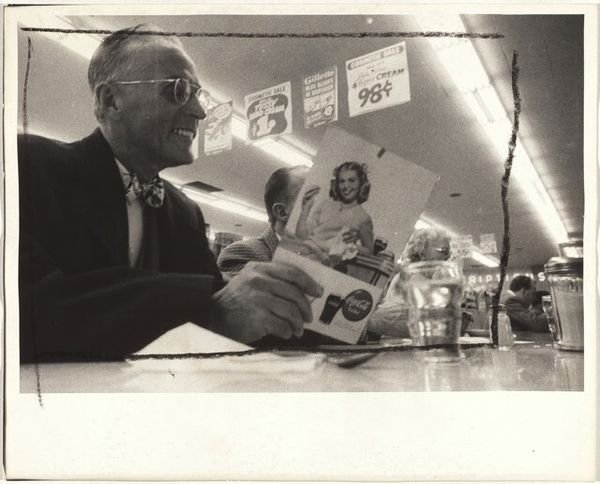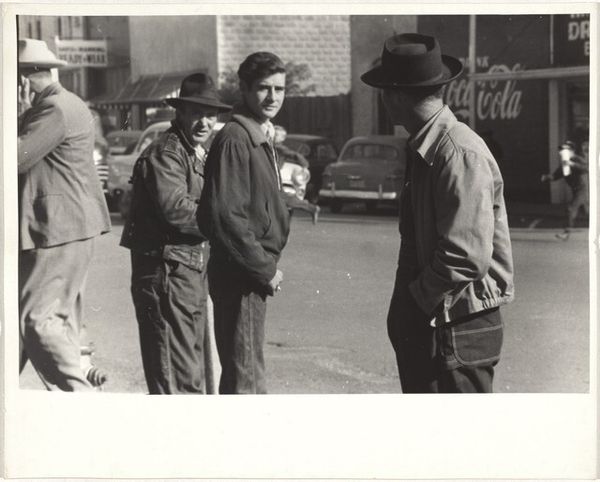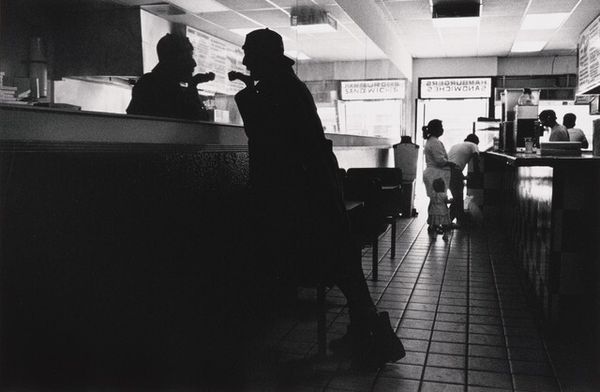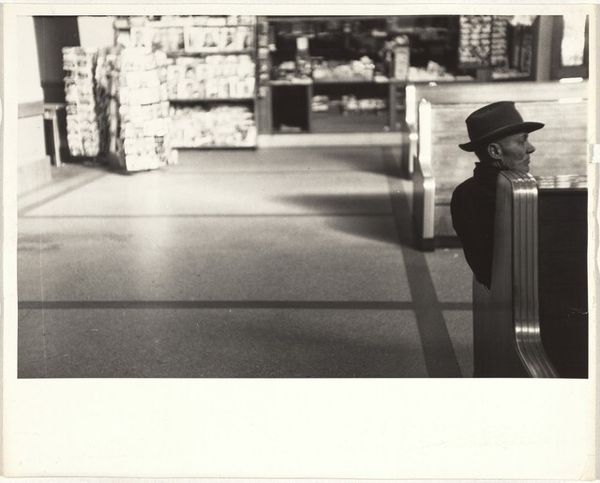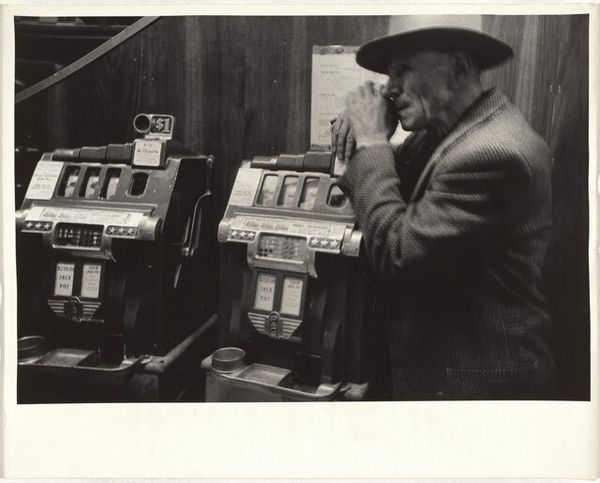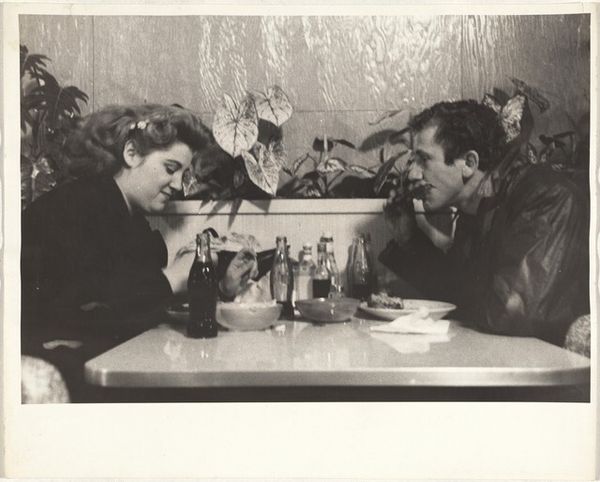
Dimensions: sheet: 20.3 x 25.3 cm (8 x 9 15/16 in.)
Copyright: National Gallery of Art: CC0 1.0
Curator: Robert Frank’s gelatin silver print, “Bar--Elko, Nevada,” taken in 1956, presents a seemingly casual slice of American life. What’s your first impression? Editor: Stark. Melancholy even. There's a heaviness to the light, the faces… everything feels weighed down. Curator: Frank, especially in "The Americans," often explored themes of alienation and disillusionment within post-war America. Note the almost archetypal figures here – the lone man, the bartender, all under the harsh fluorescent lights of a roadside bar. It’s a contemporary symbol, don't you think, of a specific type of solitude? Editor: Absolutely. The symbolism is dripping off the image! This isn’t just a bar; it’s a stage setting. That man’s hat, his posture…it reads to me as working-class weariness, maybe even despair. And the very direct focus, centered on his hands – framing the glass – puts emphasis on his dependence and reliance. I see societal struggles in that glass. Curator: Observe the way Frank plays with shadow and light. There’s a clear foreground and background separation – the main figure is more pronounced against the blurry backdrop. This creates a feeling of being trapped within the frame, echoing the potential societal entrapment of the working class. The light, reminiscent of the divine glow in classic religious paintings, feels perverted, as though we're worshipping something mundane. Editor: The framing also implicates the viewer, doesn’t it? We are pulled in, almost eavesdropping on their isolated realities. It provokes a sense of shared human experience – though one that's fundamentally unequal and potentially exploitative. This perspective, coupled with the graininess, really drives home the gritty reality he's capturing. Curator: Frank stripped away the idealized images prevalent at the time, challenging viewers to see beyond the surface. His symbols revealed something very raw, unvarnished. He captured the unseen psychological landscape. Editor: In a way, Frank invites a deeper questioning of what the American Dream even means. It encourages discourse on race, class, and the individual versus society. He's asking what progress truly means if some are still at the margins. Thank you for pointing that out! I might look into “The Americans” when I get home today! Curator: The symbolism and framing choices prompt consideration of how identity can be both personal and reflective of broader society.
Comments
No comments
Be the first to comment and join the conversation on the ultimate creative platform.
